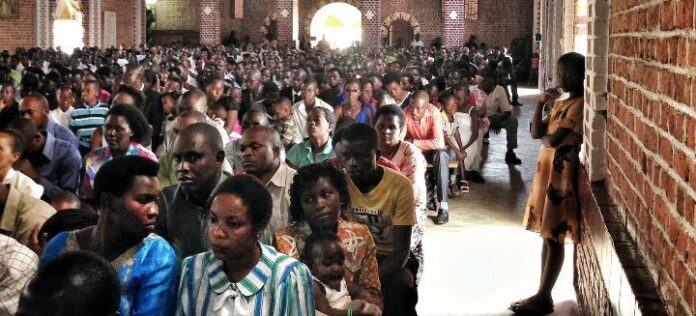On a summer afternoon in 1994, David Guttenfelder took a taxi from the Rwandan capital Kigali to the nearby region of Bugesera. He walked inside the Ntarama Church and began taking photographs of people who had been murdered by their neighbors. They had come to the small, red-brick church from all over the area seeking refuge—just as their parents and grandparents had come in the past when violence broke out between the ethnic majority Hutus and minority Tutsis. But this time the church, like many others in Rwanda during the genocide, became a killing ground.Thousands of bodies—old men and women, young men and women, boys and girls, toddlers and infants—filled the entire sanctuary. “People piled on top of one another, four or five deep, on top of the pews, between the pews, everywhere,” he said.Outside, the grounds were overgrown, and victims lay where they had fallen. “People had been hacked to death and left slumped against trees. I remember one woman with her underwear pulled down lying on the ground. You didn’t have to be a detective to see how people were killed,” he said.
RECENT POSTS
Eagles’ Saquon Barkley reacts to Super Bowl crowd booing Taylor Swift: ‘I don’t get...
Eagles’ Saquon Barkley reacts to Super Bowl crowd booing Taylor Swift: ‘I don’t get why she was getting hate’
During Super Bowl LIX, pop star...
Donald Trump Orders Federal Government to Terminate ‘Every Single Media Contract’—Is Elon Musk to...
Donald Trump Orders Federal Government to Terminate ‘Every Single Media Contract’—Is Elon Musk to Blame?
Donald Trump has always been in a battle with those...
Cardi B has a problem with Donald Trump and she is making it known....
Cardi B has a problem with Donald Trump and she is making it known. The rapper took to social media to talk about...
The real reason trump left the super bowl early revealed…
The real reason trump left the super bowl early revealed
Donald Trump left the Super Bowl before the fourth quarter on Sunday, leading some to...
Taylor Swift’s message to Jason kelce’s daughter, Wyatt, as she celebrates her Melbourne tour,...
Taylor Swift’s message to Jason kelce’s daughter, Wyatt, as she celebrates her Melbourne tour, Sparks reactions…
During Taylor Swift’s Eras Tour in Melbourne, she took...
“Brittany Mahomes Breaks Down in Tears After Emotional Instagram Post About Husband Patrick’s Super...
“Brittany Mahomes Breaks Down in Tears After Emotional Instagram Post About Husband Patrick’s Super Bowl Loss”
**Brittany Mahomes Breaks Down in Tears After Emotional Instagram...
Cardi B has a problem with Donald Trump and she is making it known....
Cardi B Blames Donald Trump in Bizarre Demand, Says “Bring My Deported Uncle Back!”
Cardi B has a problem with Donald Trump and she is...
The real reason trump left the super bowl early revealed
The real reason trump left the super bowl early revealed
Donald Trump left the Super Bowl before the fourth quarter on Sunday, leading some to...
The real reason trump left the super bowl early revealed…
The real reason trump left the super bowl early revealed
Donald Trump left the Super Bowl before the fourth quarter on Sunday, leading...
Breaking News;Social Media Is Begging Travis Kelce To “Retire” After Exposing Him For His...
Travis Kelce (Photos via Twitter)
Travis Kelce has social media thinking it may be time for him to hang it up for good.
After...
Elon Musk offered to buy my Ballon d’Or for $1-billion but I rejected the...
"Elon Musk offered to buy my Ballon d'Or for $1-billion but I rejected the offer." George Weah
"My Ballon d'Or isn't just my biggest ...
Saquon Barkley Gifted Each Eagles’ Offensive Lineman an unforgettable gift- Truckload Of BudLight Each
Best Gift Ever,
Saquon Barkley gave his Eagles' offensive linemen an unforgettable gift - a truckload of Bud Light each! This generous gesture came...















